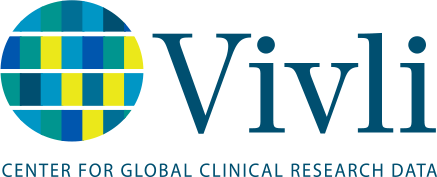Lead Investigator: Anne-Marie Dingemans, Erasmus MC University Medical Center
Title of Proposal Research: Predictive clinical characteristics for weight gain in patients treated with alectinib
Vivli Data Request: 7868
Funding Source: None
Potential Conflicts of Interest: None
Summary of the Proposed Research:
In general, patients with lung cancer are at risk for malnutrition and cancer cachexia (i.e. severe loss of body weight) in both early and advanced staged disease. Furthermore, weight loss during treatment is associated with a poorer prognosis. Consequently, there has been a lot of focus on the prevention of weight loss in cancer patients, leading to the development of several screening tools and practice guidelines.
The development of targeted therapy, like anaplastic lymphoma kinase (ALK) inhibitors (drugs directly targeting the mutated ALK domain of lung cancer cells) alectinib and lorlatinib, has led to a new group of stage IV non-small cell lung carcinoma (NSCLC) patients with long lasting survival in generally good physical condition. In this subset of patients, disease related symptoms like cancer cachexia seldom occur. In contrast, lorlatinib therapy frequently leads to dyslipidemia (i.e. increase of cholesterol and other lipids in the blood) and weight gain is seen in both lorlatinib and alectinib therapy. Interestingly, this does not seem to occur in therapy with ALK inhibitors crizotinib or ceritinib. ALK inhibitor therapy can be used in 4-5% of NSCLC patients. As seen in the registration trial, 10 percent of patients experience weight gain during alectinib therapy. Furthermore, across all clinical trials, weight increase of any grade is reported in 12% of the patients receiving alectinib (n=405). Subsequently, weight gain is categorized as a ‘very common’ side effect of alectinib according to the product information. Hence, this new phenomenon may significantly impact patients using ALK inhibitor therapy. However, apart from the prevalence, the accuracy of measurements and the significance of weight gain associated with alectinib treatment is not deliberated in published articles. Moreover, there is no data published concerning the course of weight gain and whether weight gain is reversible or persistent after treatment discontinuation. Weight gain may be less noticed in the outpatient population, since the main focus in cancer patients always has been on preventing weight loss. Therefore, more extensive insight in the extent and the implications of weight gain associated with alectinib treatment is needed.
Though generally not severe enough to cease therapy, weight gain can lead to comorbidity and a lower quality of life. However, individuals with the same body mass index (BMI) have different health risks and outcomes. The volumes of visceral adipose tissue (VAT) and subcutaneous adipose tissue (SAT) contribute to differences in health risks and outcomes. VAT is the fat compartment located inside the abdominal cavity, packed between the organs. SAT is the fat compartment in the subcutaneous layer of the skin. VAT and SAT volumes are measured via computed tomography (CT) scans. Weight gain leads to increased visceral adipose tissue (VAT) and subcutaneous adipose tissue (SAT). Increased VAT is associated with other conditions (i.e. elevated cholesterol, elevated triglycerides, pre-stage diabetes mellitus, high blood pressure and non-alcoholic fatty liver disease ). Therefore, interventions to prevent or limit weight gain are needed. Since weight gain due to treatment is a new phenomenon among lung cancer patients, there are no dietary, lifestyle or medical recommendations available focusing on this specific subgroup. Current guidelines mainly focus on patients at risk of cardiovascular disease. However, patients with ALK positive lung cancer do not share the same characteristics or age distribution with these patients.
In order to discover an adequate intervention to prevent or limit weight gain, more insight in the underlying mechanisms is needed. Currently it is unknown if the risk of significant weight gain can be predicted before start of treatment, based on baseline patient characteristics. Furthermore, the specific changes in body composition (subcutaneous fat, visceral fat, muscle mass) are yet to be discovered.
Statistical Analysis Plan:
We will aim to estimate one model on the different cohorts. Whether this is feasible, depends on the availability of same variables and missing data in each cohort. Additionally, we will decide if the populations in the cohorts are comparable enough to combine them. A random effect for study will be added in all analyses, to account for the clustering in the data. A sensitivity analysis will be conducted, by leaving out one cohort, to evaluate stability of the estimations. If the data sets are not suitable to combine, separate models for each study will be estimated.
For our statistical analyses, we will perform perform multivariable logistic mixed regressions to analyze the association between baseline characteristics and more than 10 percent weight gain after 3 and 12 months of therapy (one model for each time point). Study will be added as a random effect. For BO28984, this will be stratified for treatment (alectinib, crizotinib). A mixed model analysis will be used to assess the trend of weight gain over time, for the alectinib arm. In this model weight will be the dependent variable measured repeatedly. Time and potential other variable will be included as fixed effects. We will include random effects to account for the clustering within a patient and within study. Residuals will be used to evaluate the assumptions of the model. If the total number of missings is larger than 10% and there is a strong suspicion that the mechanism of missingness is missing not at random (MNAR), we will be unable to perform the analyses or we will have to interpret the results in context of biases.
For our statistical analyses, we will use AE grading as surrogate marker for weight gain percentages as well.
For all statistical analyses, we will use R statistics. We plan to use the following R-packages: foreign, ggplot2, dplyr, lme4, nlme. Depending on data, additional packages might be needed to transform variables.
Requested Studies:
Randomized, Multicenter, Phase III, Open-Label Study of Alectinib Versus Crizotinib in Treatment-Naive Anaplastic Lymphoma Kinase-Positive Advanced Non-Small Cell Lung Cancer
Data Contributor: Roche
Study ID: NCT02075840
Sponsor ID: BO28984
Randomized, Multicenter, Phase III, Open-Label Study of Alectinib Versus Pemetrexed or Docetaxel in Anaplastic Lymphoma Kinase-Positive Advanced Non Small Cell Lung Cancer Patients Previously Treated With Platinum-Based Chemotherapy and Crizotinib
Data Contributor: Roche
Study ID: NCT02604342
Sponsor ID: MO29750
An Open Label, Multicenter, Single-Arm, Expanded Access Study of Alectinib for Patients With ALK-Rearranged Non-Small Cell Lung Cancer After Disease Progression on or Intolerance to Prior ALK Tyrosine Kinase Inhibitor Therapy
Data Contributor: Roche
Study ID: NCT02271139
Sponsor ID: ML29453
Randomized Phase III Open-Label Study Comparing the Efficacy and Safety of Crizotinib and CH5424802 in ALK-Positive Advanced or Recurrent Non-Small Cell Lung Cancer
Data Contributor: Roche
Study ID: JO28928
Sponsor ID: JO28928
Public Disclosures:
- Sikkema, B.J., Baart, S.J., Paats, M.S., Smit, E.F., Schols, A.M., Mathijssen, R.H., van Rossum, E.F. and Dingemans, A.C., 2023. 1367P Predictive clinical characteristics for body weight gain in patients treated with alectinib: Analyses of J-ALEX, ALUR, and ML29453. Annals of Oncology, 34, p.S785. doi: 10.1016/j.annonc.2023.09.2400
- Sikkema, B.J., Baart, S.J., Paats, M.S., Smit, E.F., Schols, A.M., Mathijssen, R.H., van Rossum, E.F. and Dingemans, A.M.C., 2024. Body Weight Gain Associated With Alectinib in Patients With ALK+ Non–Small Cell Lung Cancer: Pooled Analysis of Individual Patient Data From Four Prospective Clinical Trials. Journal of Clinical Oncology, pp.JCO-24. Doi: 10.1200/JCO-24-01579

